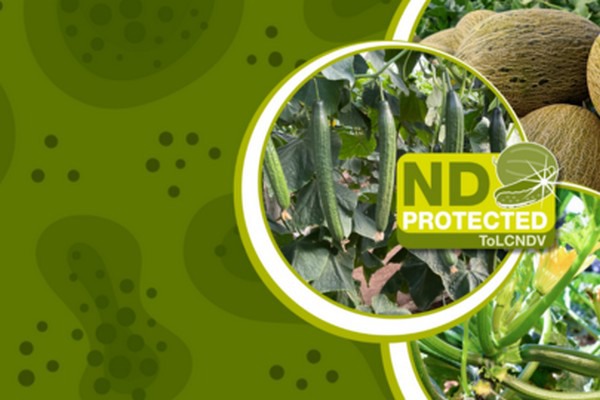Spread by white fly, Bemisia tabaci, Tomato Leaf Curl, New Delhi Virus (ToLCNDV) is spreading quickly, leaving economic losses in its wake. Launched today, the ToLCNDV Information Center is a one-stop location for key details about resistant varieties and agronomic insights to target this damaging pest.
“This virus is widespread and especially active in the Mediterranean Basin,” said Peter Szungyi, Syngenta Vegetable Seeds Portfolio Manager for Watermelon and Squash. “The number one priority for growers should be to prevent the virus vector from entering fields and tunnels.”

Important information about ToLCNDV
There’s a lot of uncertainty when new viruses emerge in crop production. Growers need a partner to help provide information about what ToLCNDV means for each crop it infects and what solutions are available to make the right decisions for their operations.
“We identified this virus as a potential issue for melon, squash, and cucumber crops years ago,” said Pedro Pleguezuelo, Syngenta Portfolio Manager for Melon and Cucumber. “Because of this, our research and development teams started working diligently to identify resistances in each of these crop types to support growers.”
With more than five years of experience working with this virus, the Syngenta Vegetable Seeds ToLCNDV Information Center features:
- Insights into crops impacted by ToLCNDV
- Up-to-date options for genetic resistance in key crops
- Updates from our experts straight to your inbox
- Answers to frequently asked questions
- Grower perspectives on the impact of the virus and solutions
For damaging viruses like ToLCNDV, there’s no one single perfect solution. It takes practicing good stewardship of genetic resistance, insect control, and good hygiene to reduce the spread. Get tips and tricks for all of these solutions here.
What damage does ToLCNDV cause in cucurbits?
This virus appears differently in each cucurbit or solanaceous crop it infects. In squash production, growers should look for slowed or stopped growth, leaves that curl up toward the underside, leaves turning yellow with marked green nerves, lost fruit set, or fruit production stopping altogether. Squash fruit is especially impacted, resulting in deformations and skin defects that make the fruits unmarketable. “In cucumber, growers who have ToLCNDV will see yellowing in leaves around the nerves, with wrinkling that curling toward the back sides of leaves,” Pleguezuelo said. “While the fruit itself might not show as many symptoms as some other cucurbits, yield potential is lost due to decreased photosynthetic activity.”
For more information:
Syngenta Vegetable Seeds
www.syngentavegetables.com
